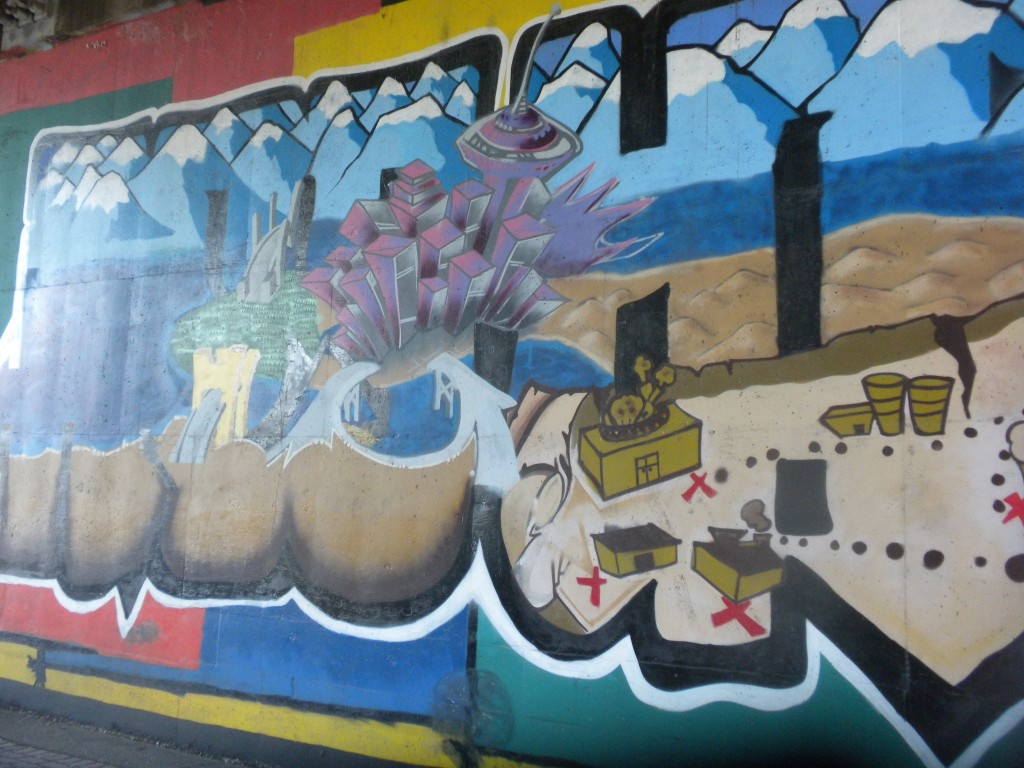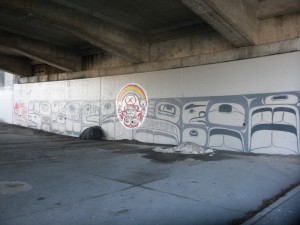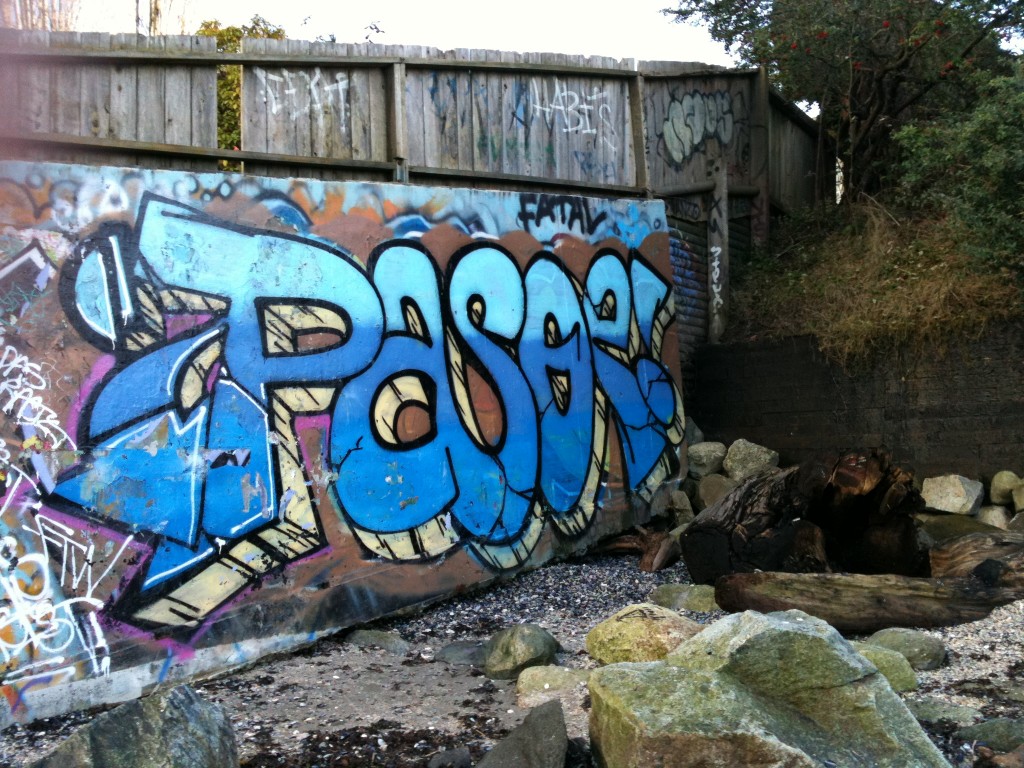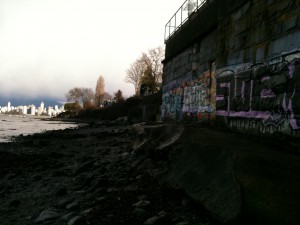Graffiti gains the reputation as something that should be portrayed in public venues, and generally need to have some characteristics that deem itself as controversial in order to justify the anonymous nature of this art medium. Some scholars have even gone to the extent of saying that graffiti is not possible if it was intended to be wholly private; instead it must have some access to the public domain (Clair and Rodrigues 1999, 3). These scholars have a good point because all forms of art, no matter how personnel in nature, have been created to share some kind of message. The presented “Star Wars” graffiti is a unique example of this because of the venue in which it was created. Being placed on Wreck Beach, and in a relatively isolated location along the coastline, changes the value or meaning of this work to a degree. I believe that the artwork shown here becomes more personnel and contains a stronger emotional connection from the artist, even if that is not directly apparent through the more mass media themed image being depicted. The images presented are common enough to have some wide spread appeal, but having the message “get well soon”, likely written by the same individual who created the images although that would not change to emotional nature of the image, present changes the commercial representation into something that reflects the interests of a specific individual. This form of art is perhaps more a means of therapy rather than art itself.
By,
Garret Lashmar
Bibliography
Clair, Robin Patric, and Amardo Rodrigues. “Graffiti as communication: Exploring the discursive tensions of anonymous texts.” Southern Communication Journal, 1999: 1-15.






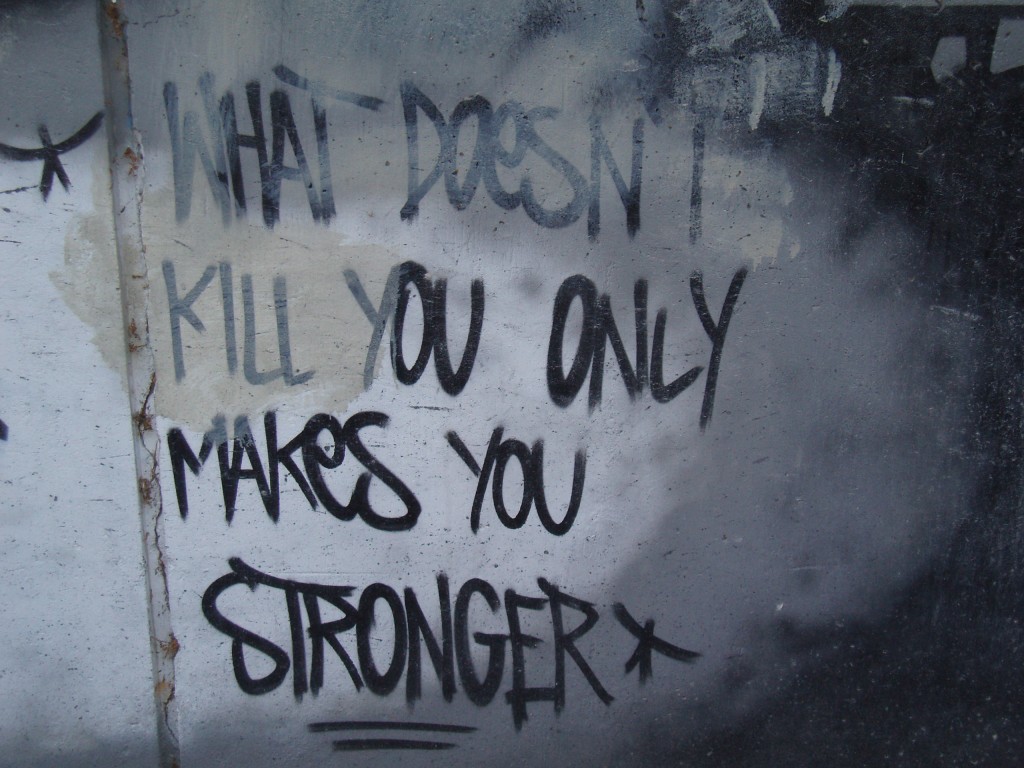
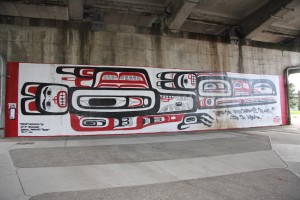
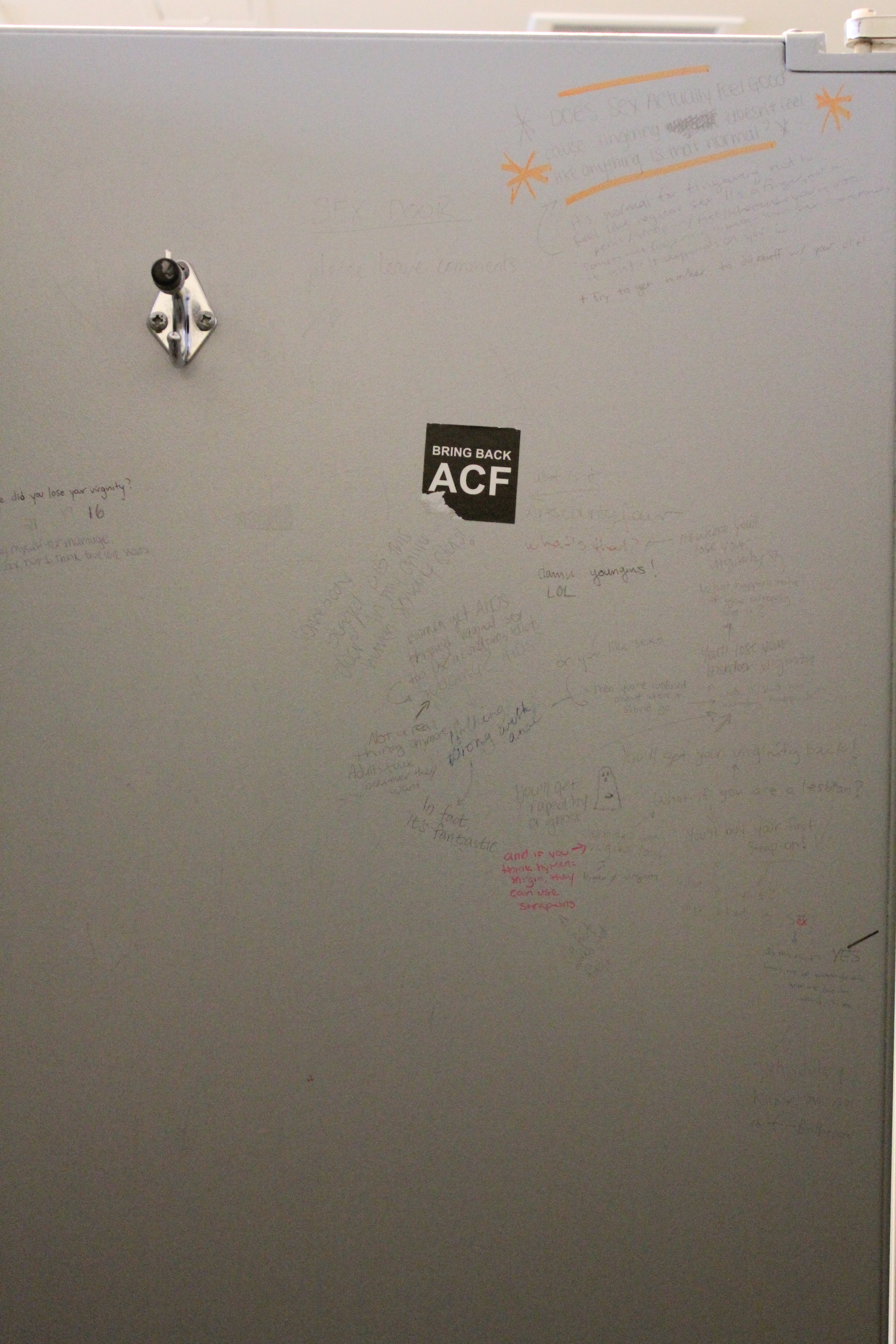 This photograph of “latrinalia” (Cole 1991:403) was taken in a women’s washroom stall in Buchanan. The privacy that this location provides has contributed to the formation of a community who, although strangers, communicate via the stall door. The privacy of the stall allows for an increased anonymity, and due to the gender-specific location, women are “able to share interests and experiences they may not generally share with men” (Cole 1991:403). Entitled the “SEX DOOR,” this particular graffiti contains a frank commentary about sex that might be considered inappropriate if verbalized. One comment reads, “Nothing wrong with anal.” Another asks, “Does sex actually feel good? Because fingering doesn’t feel like anything. Is that normal?”
This photograph of “latrinalia” (Cole 1991:403) was taken in a women’s washroom stall in Buchanan. The privacy that this location provides has contributed to the formation of a community who, although strangers, communicate via the stall door. The privacy of the stall allows for an increased anonymity, and due to the gender-specific location, women are “able to share interests and experiences they may not generally share with men” (Cole 1991:403). Entitled the “SEX DOOR,” this particular graffiti contains a frank commentary about sex that might be considered inappropriate if verbalized. One comment reads, “Nothing wrong with anal.” Another asks, “Does sex actually feel good? Because fingering doesn’t feel like anything. Is that normal?”